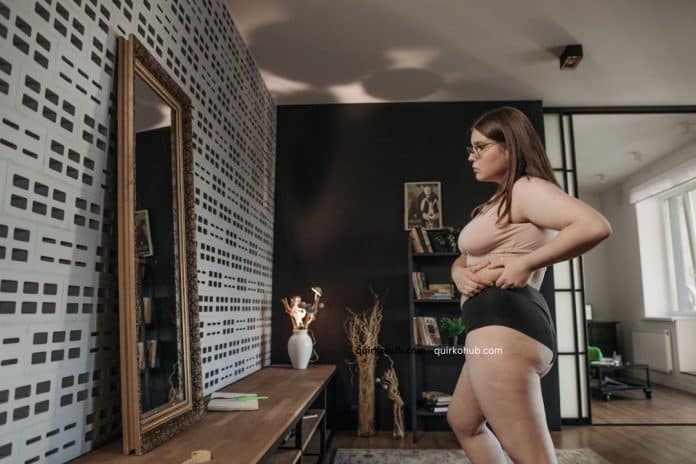The way we present ourselves to the world significantly influences various life aspects, including our emotional health. This connection between physical appearance and emotional resilience often goes unnoticed yet plays a vital role in shaping our daily interactions, confidence levels, and overall mental stability.
Appearance serves as a form of self-expression and can act as a buffer against life’s challenges, providing comfort and security in both personal and professional domains. Understanding how this relationship works can help individuals navigate their self-image and emotional well-being more effectively.
The Psychology Behind Self-Image
Self-image refers to how individuals perceive themselves, encompassing both physical and psychological aspects. A positive self-image can enhance emotional resilience, while a negative perception can undermine it significantly. Research indicates that individuals with a healthy self-image tend to handle stress better and exhibit greater levels of adaptability in the face of adversity. Enhancing one’s appearance, even subtly, can instill a sense of control and self-worth that translates into improved emotional health.
When you feel good about the way you look, it often translates into increased confidence. This newfound confidence enables individuals to tackle challenges head-on, whether in their professional or personal lives. Seeing a medical professional about any changes you might make is an important step to take. Whether you consult a plastic surgeon shreveport, Princeton, or anywhere else, making a change in appearance can be a small yet impactful step towards building that confidence. As such, the psychological implications of our self-image are profound, influencing not just how we see ourselves but how we interact with the world around us.
The Role of Appearance in Social Interactions
Physical appearance can significantly affect social interactions. Research shows that individuals deemed attractive often receive more favorable treatment in various settings, including job interviews and social gatherings. This preferential treatment can reinforce a positive self-image, creating a feedback loop where individuals feel more confident and engaged. Consequently, a strong appearance attracts attention and creates opportunities for meaningful connections.
How one is perceived by others can influence their emotional state. Recognition and positive reinforcement can bolster an individual’s mood and self-confidence, making them more resilient in facing life’s challenges. On the flip side, negative judgments based on appearance can lead to feelings of inadequacy and anxiety. Cultivating a positive body image and self-presentation can be essential strategies for emotional resilience.
Impact of Media and Societal Standards
The media plays a crucial role in shaping perceptions of beauty and attractiveness. Advertising, social media, and even television perpetuate specific beauty standards that many individuals strive to achieve. Unfortunately, these often unrealistic standards can lead to feelings of inadequacy and low self-esteem when one fails to meet them. Encountering pervasive images of “ideal” beauty creates numerous challenges for emotional resilience, making some individuals feel disconnected from their self-worth.
To combat this, it is important to cultivate awareness about the distortions presented by the media. By understanding that these standards are designed for commercial purposes rather than true representation, individuals can develop a healthier perspective on their appearance. Learning to focus on personal goals and definitions of beauty can cultivate a more robust emotional foundation, fostering resilience in varied life situations.

Physical Care and Emotional Well-Being
Taking care of one’s physical health can have significant implications for emotional resilience. Regular exercise, a balanced diet, and sufficient sleep contribute to physical well-being and to mental health. Engaging in physical activities helps release endorphins, the body’s natural mood lifters, which dynamically impact one’s overall emotional state. Appearance becomes a byproduct of a healthy lifestyle, lending to a more confident self-image.
Self-care rituals, such as skincare routines or personal grooming, can enhance mood and promote a sense of normalcy. These practices allow individuals to connect with themselves in a meaningful way, fostering an image that resonates with their true identity. This connection strengthens emotional resilience, enabling a more confident approach to life’s hurdles.
The Balance Between Inner and Outer Beauty
While physical appearance undeniably plays a role in emotional resilience, inner beauty holds equal significance. Cultivating kindness, empathy, and self-acceptance creates a balanced approach, allowing individuals to see beyond external measures of worth. Fostering qualities such as gratitude and resilience can improve one’s self-image while promoting authentic connections with others.
The relationship between inner and outer beauty is complementary and mutually reinforcing. Positive internal attributes can enhance the perception of one’s appearance, while confidence and self-acceptance can shine through facial expressions and posture. Therefore, nurturing an authentic sense of self becomes key to maintaining emotional stability and resilience amidst life’s inevitable challenges.
The interplay between physical appearance and emotional resilience is undeniably complex. While lasting confidence may stem from within, the external representation of self plays a critical part in shaping one’s experiences in the world. By understanding and embracing this relationship, individuals can create a harmonious balance that supports both mental and emotional health.
